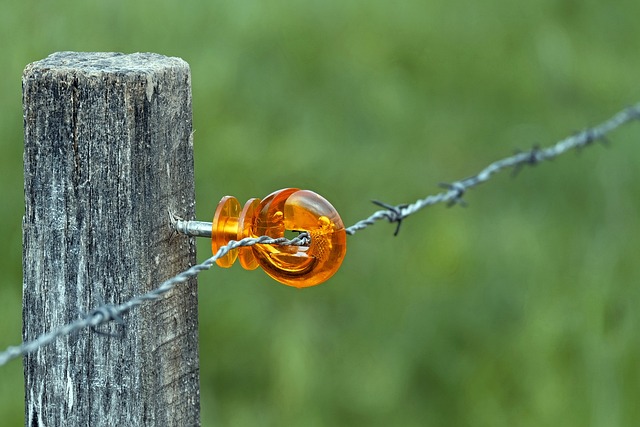New Bedford residents often rely on fences for security, privacy, and aesthetic appeal. Whether your fence is showing signs of wear and tear or you’re looking to install a new one, understanding your needs and local regulations is key. This guide covers everything from evaluating damage and choosing materials to the installation process, post-care, and local rules, ensuring your New Bedford fence project is a successful one.
- Understanding New Bedford Fence Needs
- Evaluating Damage and Repair Options
- Choosing the Right Fence Materials
- Installation Process: Step by Step
- Post-Installation Care and Maintenance
- Local Regulations for Fence Projects
Understanding New Bedford Fence Needs
Fences play a vital role in defining property boundaries and enhancing outdoor spaces in New Bedford. Whether it’s a charming wooden fence or a sturdy chain-link barrier, each type comes with unique maintenance requirements. Understanding these needs is crucial for effective fence repair and installation.
In New Bedford, the weather conditions can vary significantly, from hot summers to cold winters, which takes a toll on outdoor structures. Homeowners should regularly inspect their fences for signs of damage caused by extreme temperatures, strong winds, or heavy rainfall. Common issues may include warped panels, loose posts, rusted hardware, and broken rails, all of which require prompt attention to ensure the fence’s longevity.
Evaluating Damage and Repair Options
When it comes to evaluating damage and repair options for your fence, the first step is to thoroughly inspect the entire length of the fence line. Look for signs of rot, peeling paint, or any structural weaknesses in the posts, rails, or panels. Take note of any uneven surfaces or gaps that could indicate underlying issues.
Once you’ve identified the extent of the damage, it’s time to consider your repair options. Minor repairs might involve replacing individual pickets or sections of fencing, while more severe cases may require complete fence replacement. Local regulations and building codes should be taken into account when deciding on repairs, especially if historical or architectural preservation is a factor.
Choosing the Right Fence Materials
When considering fence repair or installation in New Bedford, choosing the right materials is paramount to ensuring longevity and aesthetic appeal. Different types of fences suit various needs; wood, vinyl, chain link, and iron each offer unique advantages and disadvantages. Wood, for instance, adds a natural charm but requires regular maintenance. Vinyl is low-maintenance and comes in diverse styles, while chain link offers security at a lower cost. Iron fences are durable and elegant, perfect for creating a grand entrance or defining property lines.
Factors like climate, budget, and desired visual effect should guide your selection. In New Bedford’s coastal environment, materials resistant to moisture and salt corrosion are ideal. Additionally, consider energy efficiency; vinyl and iron fences can reduce heating and cooling costs due to their insulating properties. Always consult with professionals who can offer expert advice tailored to your specific requirements.
Installation Process: Step by Step
The first step in any fence repair or installation project is preparation. This involves clearing the area, removing any old fencing, and assessing the ground to ensure a solid foundation. Once cleared, dig post holes at the designated locations, ensuring they are deep enough and properly spaced. Next, set the posts in place and level them, using wood or concrete to secure them firmly.
After the posts are secured, attach the fence panels or rails, depending on the chosen design. Use high-quality fasteners like brackets, screws, or nails to ensure durability. For added strength and stability, consider reinforcing joints with metal connectors. The final step involves inspecting the entire fence for any gaps or misalignments and making adjustments as needed.
Post-Installation Care and Maintenance
After your new fence is installed, proper care and maintenance will ensure its longevity and keep it looking its best. Regular cleaning with a soft brush or garden hose is recommended to remove dirt, debris, or any built-up residue. Avoid using abrasive cleaners or high-pressure washers, as these can damage the fence’s surface.
Inspect your fence regularly for any signs of wear, rot, or damage. Repair any minor issues promptly to prevent them from becoming bigger problems. Keep an eye out for loose posts or panels and tighten them as needed. Apply a fresh coat of paint or sealant every few years to protect the fence from the elements and maintain its aesthetic appeal.
Local Regulations for Fence Projects
Before starting any fence repair or installation project in New Bedford, homeowners should familiarize themselves with local regulations and permits. The city of New Bedford has specific guidelines regarding fencing, including height restrictions, setback requirements, and material choices, which vary depending on the zone where the property is located. These rules are designed to maintain the aesthetic appeal and safety of neighborhoods while also ensuring proper drainage and access for emergency vehicles.
It’s essential to check with the local building department or zoning office to obtain the necessary permits and understand any special considerations for your project. Failure to comply with these regulations can result in fines, delays, or even the requirement to remove and redesign the fence.
